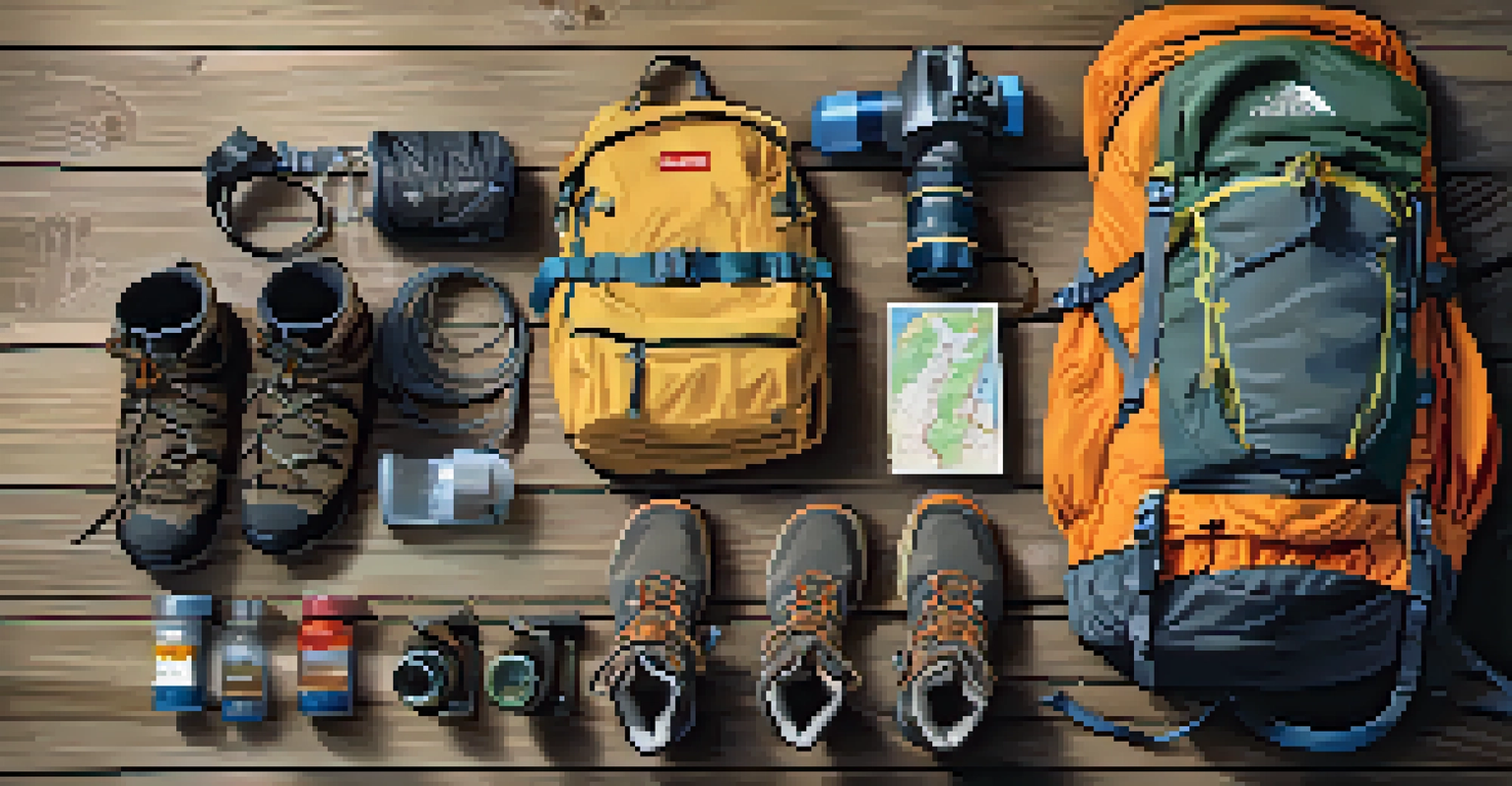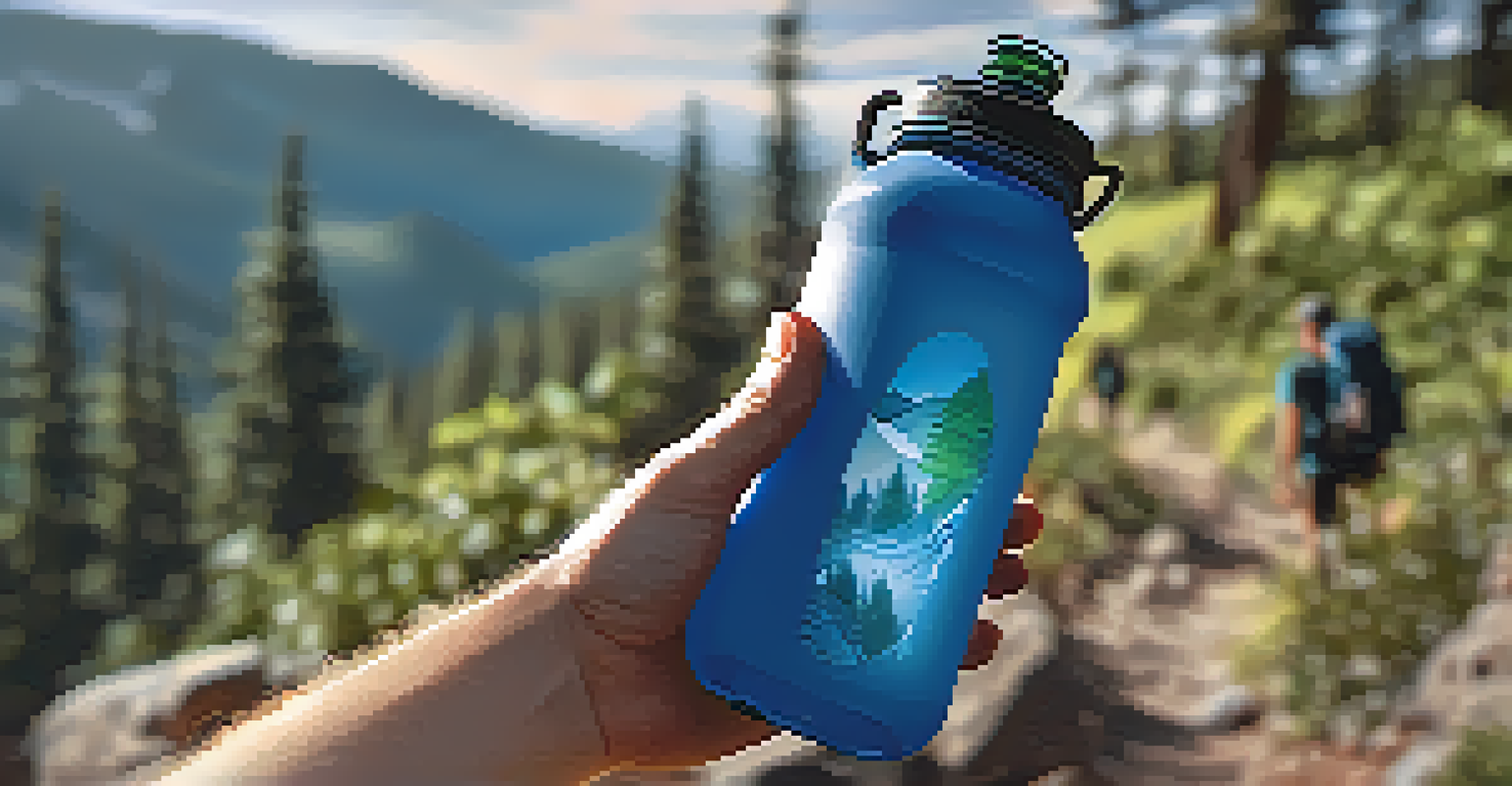Essential Gear for Hiking in the Rocky Mountains

Choosing the Right Footwear for Rocky Mountain Trails
When it comes to hiking in the Rocky Mountains, your footwear can make or break your experience. A sturdy pair of hiking boots provides the ankle support and traction needed on rocky, uneven terrain. Look for boots that are waterproof to keep your feet dry during unexpected rain or river crossings.
The mountains are calling and I must go.
Additionally, consider the fit and comfort of your boots. You’ll be spending hours on your feet, so it's essential to try them on with the socks you'll wear while hiking. A good rule of thumb is to allow a little extra space in the toe box to prevent discomfort during long treks.
Lastly, don't forget to break in your boots before hitting the trails. Taking them on shorter walks will help soften them up and reduce the risk of blisters when you’re out exploring the breathtaking Rocky landscapes.
Layering Your Clothing for Variable Mountain Weather
The weather in the Rocky Mountains can change on a dime, which is why layering is essential. Start with a moisture-wicking base layer that keeps sweat away from your skin, making you feel comfortable as you hike. Synthetic fabrics or merino wool are great options for this base layer.

Next, add an insulating layer. Fleece or down jackets work well to trap heat without adding too much bulk. This layer can be easily removed or added as temperatures fluctuate throughout the day.
Choose the Right Hiking Footwear
A sturdy, well-fitted pair of waterproof hiking boots is essential for comfort and support on rocky terrains.
Finally, don’t overlook the importance of a waterproof and windproof outer layer. A lightweight, breathable rain jacket will not only protect you from the elements but also help regulate your body temperature during those unexpected mountain storms.
The Importance of a Reliable Backpack on Your Hike
A well-fitted backpack is one of the most important pieces of gear for any hiking adventure. Look for a pack that has enough space to carry your essentials, like water, snacks, and an extra layer, but isn’t so large that it becomes cumbersome. A good rule of thumb is to choose a backpack with a capacity between 20 to 40 liters for day hikes.
In every walk with nature one receives far more than he seeks.
Comfort is key when selecting a backpack. Make sure it has padded shoulder straps and a hip belt to distribute the weight evenly. This will help prevent strain on your back and shoulders, allowing you to enjoy the journey without discomfort.
Additionally, consider a backpack with various compartments and pockets. This will help keep your gear organized and easily accessible, especially when you need quick access to items like your water bottle or first aid kit.
Staying Hydrated: Water Systems for Your Hike
Hydration is crucial when hiking in high altitudes like the Rockies, where the air can be dry and dehydration happens quickly. Carrying enough water is a must, and there are several ways to do this. Hydration packs are a popular choice, allowing you to sip water easily without stopping, while traditional water bottles can also get the job done.
Investing in a high-quality water filter or purification system is an excellent idea, especially for longer hikes. This way, you can refill your water supply from streams or lakes safely, ensuring you stay hydrated without having to carry excessive amounts of water at the start.
Layer Your Clothing Effectively
Layering with moisture-wicking, insulating, and waterproof materials helps you adapt to the unpredictable mountain weather.
Remember, drinking water regularly, even when you don’t feel thirsty, is essential. Set reminders or take a sip every time you take a break to keep your hydration levels optimal.
Navigating the Trails: Maps and GPS Essentials
When exploring the vast wilderness of the Rocky Mountains, having a reliable navigation system is essential. Traditional maps can be invaluable, as they provide a broad overview of the trails and terrain. It’s wise to bring a physical map even if you plan to rely on technology.
In addition to paper maps, a GPS device or a smartphone app can help pinpoint your location and track your route. Just be sure to download any necessary maps beforehand, as cell service can be spotty in remote areas.
Lastly, familiarize yourself with the trail and the navigation tools you choose to use. Understanding how to read maps and the basics of using GPS will give you confidence as you navigate the beautiful but sometimes challenging Rocky trails.
Emergency Gear: Be Prepared for the Unexpected
No one wants to think about emergencies while hiking, but being prepared is crucial. A well-stocked first aid kit should be a staple in your backpack, containing items like band-aids, antiseptic wipes, and any personal medications. Having a kit can make all the difference in minor accidents.
Additionally, pack a multi-tool or knife. These handy gadgets can serve various purposes, from opening food packages to fixing gear. They’re lightweight and can fit easily in your pocket, making them an essential item.
Stay Hydrated on the Trails
Carrying sufficient water and using hydration systems will keep you hydrated and energized during your hikes.
Lastly, don’t forget to carry a whistle and a flashlight. A whistle can attract help if you get lost, while a flashlight is vital for unexpected delays that might leave you hiking after dark. Together, these items provide peace of mind and readiness for any situation.
Food and Snacks: Fueling Your Hiking Adventure
Keeping your energy levels up is vital while hiking, and packing the right snacks can make all the difference. Choose lightweight, high-energy foods like trail mix, energy bars, or dried fruits that are easy to carry and provide quick fuel. They’re perfect for a quick bite during breaks without weighing you down.
Don’t forget to bring a substantial lunch if you’re planning to hike for several hours. Sandwiches or wraps are great options, as they’re easy to pack, filling, and can be made in advance. Just keep them in a cooler bag to ensure freshness.

Lastly, remember to stay mindful of your food waste. Bring a small trash bag to pack out any wrappers or leftover food to keep the beautiful Rockies clean and pristine for future hikers.